Terror of the year 1000, story of a fabrication.
“It was a universal belief in the Middle Ages that the world was to end with the year one thousand of the incarnation […] This end of such a sad world was all together the hope and the dread of the Middle Ages. » Jules Michelet (1798-1874), History of France, volume III.
From the outset, let's put an end to the suspense:this terror of the year one thousand (or one thousand) did not exist. Just as the chronological milestones that we set up over a long millennium to designate the Middle Ages are fictitious and posterior, the burden with which we can agonize our distant ancestors is greatly exaggerated. However, if there is any point in talking about this period of transition with dated and explicit landmarks such as the Germanic/barbarian invasions of the 5th century, the Hundred Years War, the beginning of the great inventions (printing by Gutenberg) and maritime discoveries (America by Christopher Columbus); it is also quite wise to twist the neck of the lyrical flights of Michelet on the year one thousand.
Why ? Because, unlike the countries of the North, France like Belgium continue to perceive this soft belly of the Middle Ages with disdain and derision. The year one thousand is an incarnation of this. How to do ? In all simplicity:with mainly chronological and succinct markers on the construction of such a legend. This somewhat atypical subject is above all a (small) popular article which, I hope, will make you want to find out more with Georges Duby's book on the question or the one entitled "Le Siècle de l'An Mil" , collective work of Louis Grodecki, Florentine Mütherich, Jean Taralon and Francis Wormald.
N. B.:This article, in an effort of visibility, will be divided into five sections (preamble, beginnings, chronological markers, point of view of historians and conclusion) and including the important points to remember.
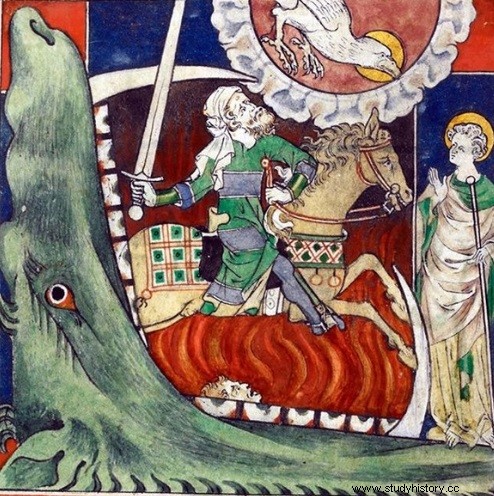
Preamble:
Once the famous date has passed, millennials become verbose over time (especially in the chronicles), but the impact on society differs according to social class. The monks who maintain this fear will go so far as to influence modern historians (cf. Jules Michelet). There is however a Burgundian monk who stands out from the crowd:Raoul Glaber (985-1047). As we will see, historically, the year 1000 passed unnoticed; but it was only a posteriori that Raoul Glaber instilled the fateful date that precedes the procession of terrors and apocalyptic phantasms. In the myths Christianity, the first believers were convinced that the world was created to last 6,000 years.
The theologian Hippolytus of Rome (3rd AD) places the birth of Christ in 5500 anno mundi , knowing that the Messiah arrived at the noon of the 6th day. The first end of the world should have occurred in 500 anno domini . Very quickly, Saint Augustine (354-430) imposes a spiritual reading of the year one thousand of the apocalypse. Only a year after his death, the church condemns the millennial doctrine at the Council of Ephesus (430-431).
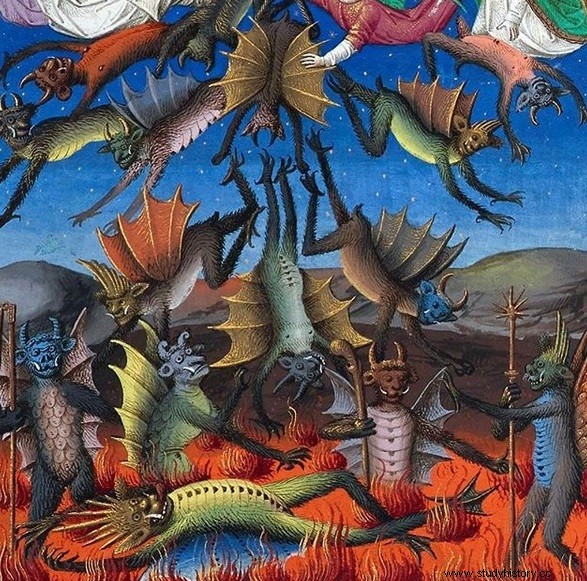
The beginnings:
Ex nihilo nihil fit (“nothing comes from nothing”), as the consecrated Latin expression would say. We must therefore go back to the famous predictions of the Apocalypse. This book, the last of the New Testament, was written by John of Patmos in 95. It announces that 1,000 years after Christ, Satan (in short, the personification of Evil) will be freed from his chains and will descend to earth to spread ruin, disasters and above all a cataclysmic desolation. This period is known as the “tribulation” before the Messiah (Jesus Christ) returns a second and final time to judge men and save the righteous among them.
Images of Epinal cross our minds with the illuminated manuscripts imagining the macabre dance of the dead who wake up to terrify the living and, in the middle, demons with forked horns sowing trouble and disarray, under cover of an eclipse unending. It is difficult in these conditions not to imagine the peasants under constant terror (at least, if we are to believe the reading of certain manuscripts). For this, the monks contributed, in their cloisters, laid the seeds of a doubt.
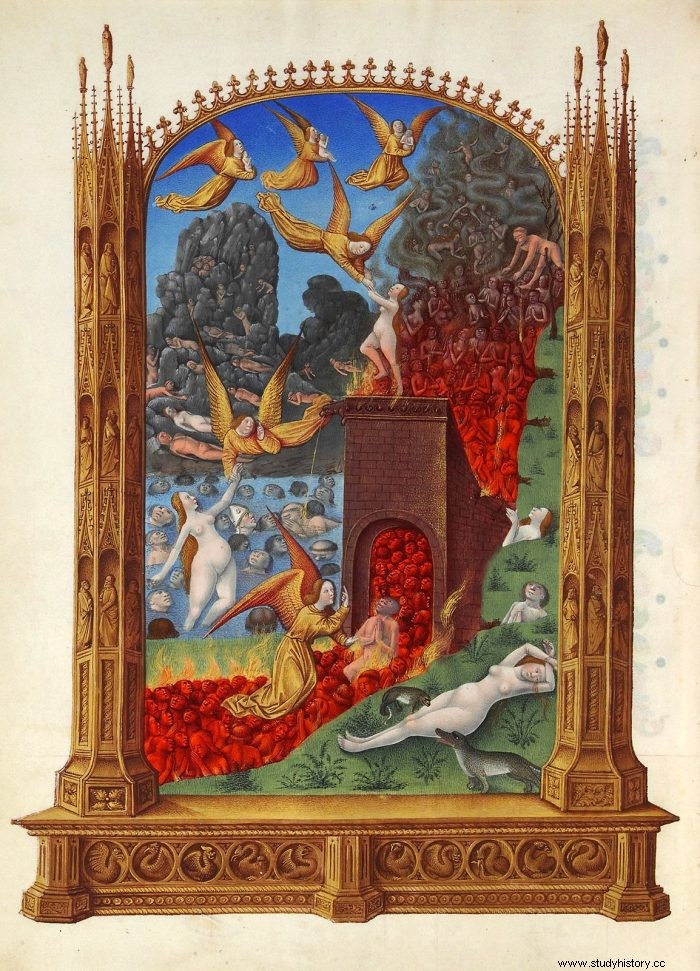
Chronological markers:
Born around 985, Raoul le Labre (that is to say the “bald”) was a turbulent child, which is why he was sent very young to the Saint-Germain monastery in Auxerre. His particularly irritating temper went hand in hand with his erudition. After passing through seven abbeys, he became a Cluniac, an order whose austerity is no longer to be exaggerated. In 1030, he will get down to his life's work:Stories , not only the unfinished writing of a chronicle of a scholar but above all a holy story. For Raoul Glaber, the manifestation of God is visible in this century whose chronology makes us begin in the year 1000 and 1033, the millennium of the birth and passion of Christ. There divine, almost ostentatious signs and miraculous (vengeful, so to speak) phenomena manifested themselves with brilliance, giving the illusion of a century obsessed with fervor and subject to fear.
Similarly, the Benedictine Abbo de Fleury (945-1004) reports having heard preaching in a Parisian church that the antichrist would come at the end of the year one thousand and that the general judgment would shortly follow, in 970, he tells us. . Another Benedictine friend, Ademar de Chabannes (988-1034) indicates that the year 1010 is filled with disastrous signs and he even goes so far as to draw a parallel with the destruction of the Holy Sepulcher in Jerusalem by the Caliph of Cairo in 1009.
Thus, as we can see recorded on manuscripts, there are many doubts because the events that come out of everyday life have been scrupulously noted in various works for our attention. It does not take more for an epidemic known as the "burning sickness" in 997 to deeply worry, the same for stars which light up in the sky in 1023 or even a rain of blood on Aquitaine in 1028.
If these events back to back one after the other call out, it is important to remember that between 970 and 1000, 150 papal bulls will be written and there is not the slightest allusion to the end of the world. No attention is paid to the year 1000.
In the 16th century, the German humanist Jean Trithem (1462-1516) was the first of his time to spread the idea of dread and collective panic collected by Raoul Glaber and his esteemed colleagues. His explanation is supported by the previously quoted rumors of these new millenarians and natural disasters, always conducive to arousing the believer's concern about the always justified wrath of God. The humanist is not disinterested in this matter, because, in fact, it made it possible to make a contrast between past centuries plagued by ignorance and superstition and the Renaissance, a source of knowledge and science, where antiquity comes back strong. The Italian cardinal César Baronius (1538-1607) would follow in his footsteps a few decades later by taking up the same arguments and thus stigmatizing the year 1001. credulity of the humble who, in his time, fell, according to him, into the trap of the Reformation.
A final warning shot will finish the work of mystification when the philosophers of the Enlightenment and the Revolutionaries attack them, but this time to put down Christianity, the height of ridicule for the new men of that time.
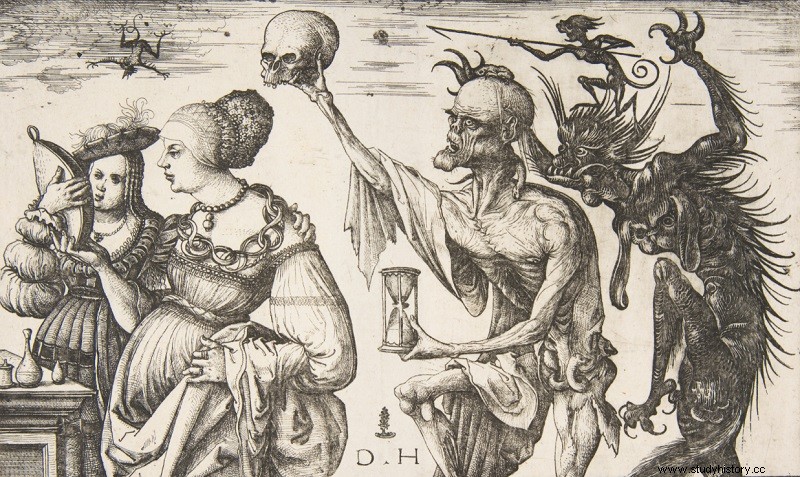
Historians' point of view:
- The Swiss historian and economist Jean de Sismondi (1773-1842) speaks to us, he says, of an “almost universal expectation of the end of the world at that time”.
- The writer of serial novels Eugène Sue (1804-1857) gets involved in our subject in “Mysteries of the people” by evoking a clerical plot aimed at spreading false rumors of apocalypses in order to profit from them. terrified flocks. “Thanks to this infamous juggling, the clergy extorted a large number of goods from the Frankish lords […]:lands, castles, serfs, herds, splendid crockery, beautiful coined gold, rich armor, they gave everything down to their shirts.” , while the men of God clink glasses and feast. The exercise he undertakes reverses the words of the manuscripts:it would be a plot initiated from the beginning.
- The Third Republic, anticlerical it goes without saying, took the opportunity to perpetuate this legend that had become tenacious from the year one thousand.
- Georges Duby (1919-1996) notes in a period extending between the last third of the tenth and the first third of the eleventh century, a surge in the rites of purgation:pogroms against the Jews, excommunication, large expiatory assemblies where exhibits the relics of the saints brought out with great pomp from the churches.
- The romantic period, as its name suggests, is carried away by verve and lyricism to the detriment of historicity. Jules Michelet (as mentioned earlier in this article) leaves no room for ambiguity in his remarks:“It seemed that the order of the seasons was reversed, that the elements were subject to new laws. A terrible plague devastated Aquitaine […] famine ravaged the world, the poor gnawed the roots of the forests, many indulged in devouring human flesh.”
- Towards the end of the 19th century, historians will study the original texts more carefully and will not detect the trace of a collective and contagious fear within medieval society. Moreover, the so-called eschatological manifestations are found more towards the end of the 11th century than at the end of the 10th century.
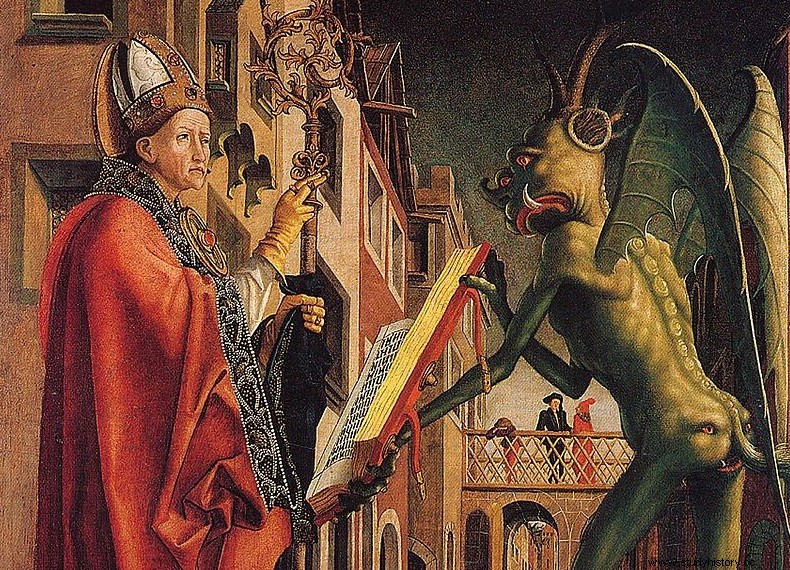
In conclusion:
Raoul Glaber, Abbon de Fleury or Ademar de Chabannes would not be completely the only ones to blame in this story. There is, indeed, a frightening eschatological thought but this one is due to a reality resulting from Christianity, a monotheistic religion which undoubtedly tends towards the end of the world.
It is imperative to dissociate the majority of the population and the scholars of this time:only the clerics accustomed to dating their acts from the year of the Incarnation knew that they were in the year 1000. Conversely, the people identified themselves over time with the seasons or the major festivals of the religious calendar. It was only during the second half of the 11th century that the Christian era became widespread.
Moreover, since Saint Augustine (who forbids it, let us remember), the thousand years of which the Apocalypse speaks is to be taken in the allegorical sense and that it is impossible, according to him, to know the exact date of the Judgment. last. It will take 1100 for literal reads to appear.
Sources and references of illustrations:
– Apocalypsis cum figuris (1275-1300).
– The Apocalypse (1300-1325). BL, Royal MS 19 B XV, fol.10v.
– Book of Hours of Vincent de Beauvais. Illumination of the Fall of the Angels.
– The Very Rich Hours of the Duke of Berry, MS 65.
– Daniel Hopfer:Death and the Devil surprise two women, circa 1510-1515.
– Michael Pacher:Saint Augustine and the devil.
